HMM WEEKLY for August 20, 2019
Enlarged for your enlightenment
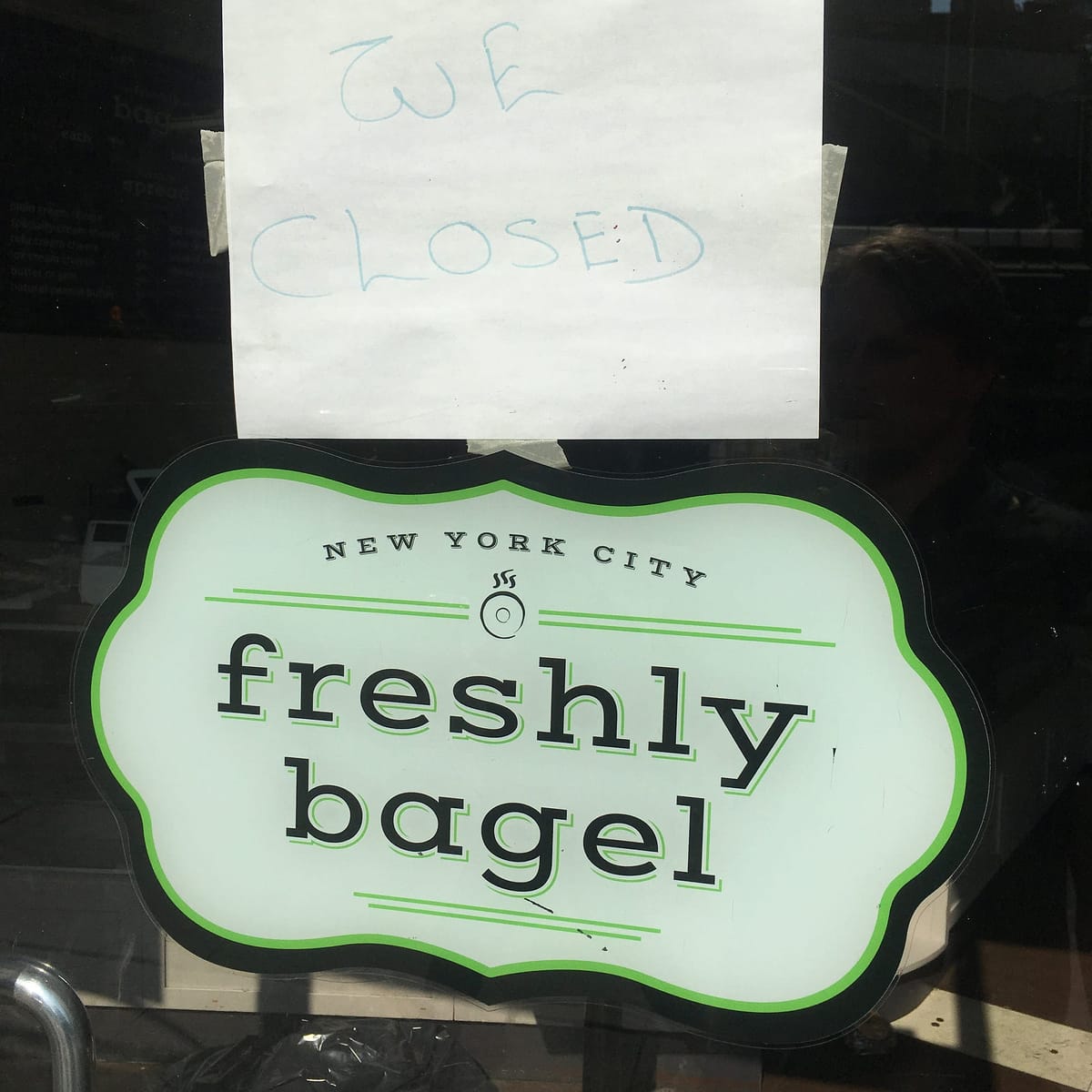
Reminder: Hmm Daily is now Hmm Weekly
GOOD MORNING! This is another preliminary transmission of what used to be the HMM DAILY PREMIUM NEWSLETTER. We have switched our email distribution to SUBSTACK, a new and exciting newsletter delivery and reading platform, and we hope those of you who had previously supported HMM DAILY and received the full Premium Newsletter will continue to accompany us on our happy success journey as we present content on a weekly basis with more fun and more thrills in between. We will post items that are FREE TO ALL as well as other things viewable exclusively to financial supporters of HMM WEEKLY.
If someone has passed along this message, it’s easy to sign up for yourself.
We urge you to spread the word about HMM WEEKLY, and we thank you for reading.
The Afterlife of the Pickle Jar

THE BAGEL PLACE was never going to make it. It had that vibe: the space was put together wrong; the portions were sloppy-big in that way that suggests nobody really planned or priced things out; the eating experience was fine, if you had to say it was something, but it didn't make you say "Thank God this place is here" or "We have to get bagels here again, and soon." You can get bagels and bagel-stuff in the neighborhood from people who make a mission of it, so, realistically, why would you go to this one?
Still it was startling how fast it came and went. There wasn't time to firm up those impressions into conscious thought before it shut down. They never even hung out a real sign, only a temporary tarp-banner above the door. Maybe we would have given it another shot, but there was no chance to decide not to.
Instead there was a WE CLOSED sign taped to the door and the sight of fixtures in disarray—and, on a side counter, where the sun reached in, this big jar of sliced pickles. The light glowed through the pickle-brine.
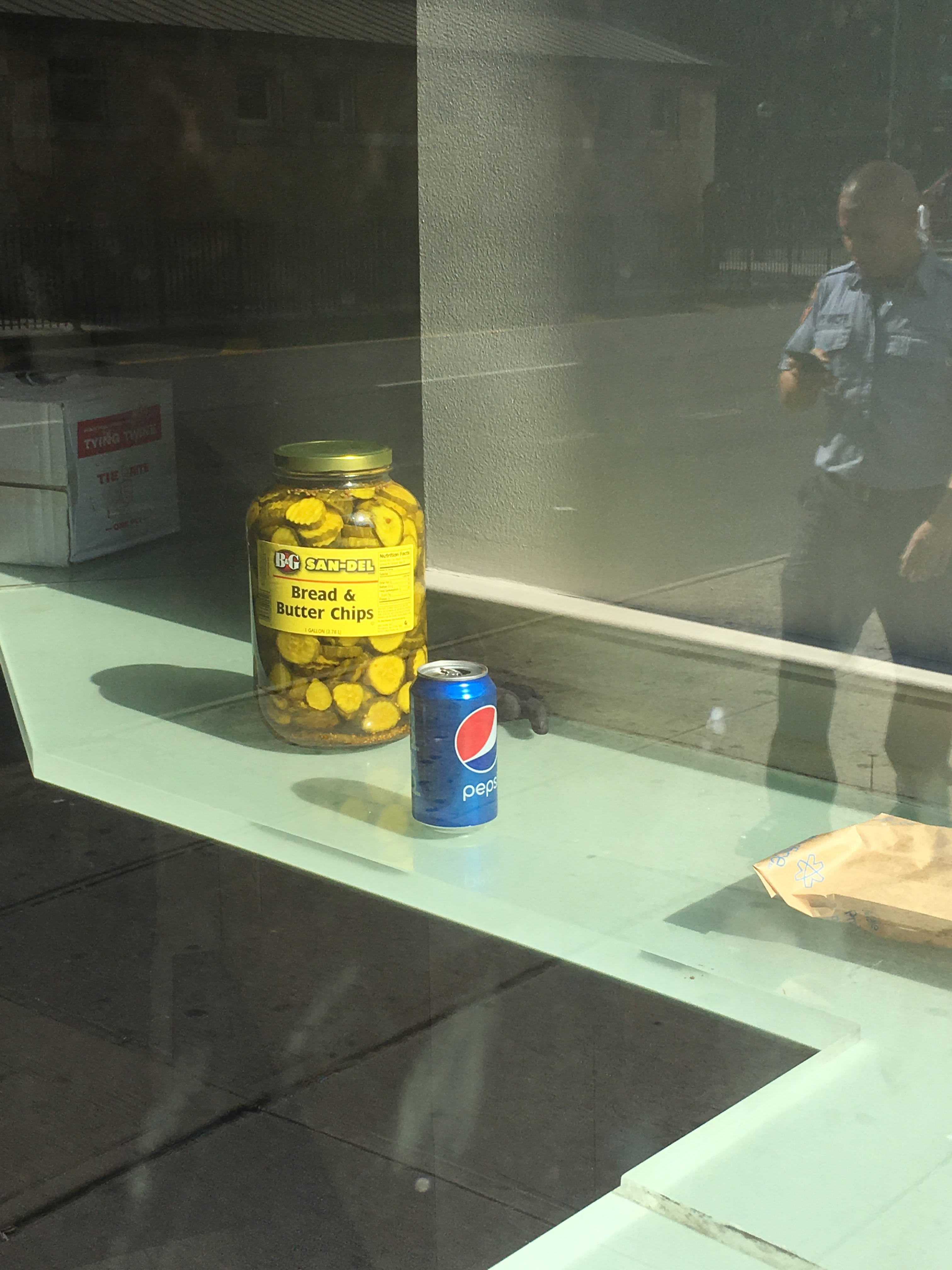
Somebody had bought the pickles presumably because pickles are a sandwich ingredient, and they were going into the business of selling sandwiches. Some people do have strong feelings for or against pickles but mostly they're an uninspected part of the commercial sandwich process. They were one of the necessary items for the people who started the bagel place, and then they were no longer necessary. The rest of the setup could be carted off and reused, but the pickles weren't worth claiming or saving. They stayed there, holding their pickle-vigil, till the windows were covered over.
VISUAL CONSCIOUSNESS DEP’T
Details from the Star Trek: Original Series Set Tour in Ticonderoga, NY

You can follow us on Instagram.
I Got Stuck in Traffic in Midtown on Google Maps
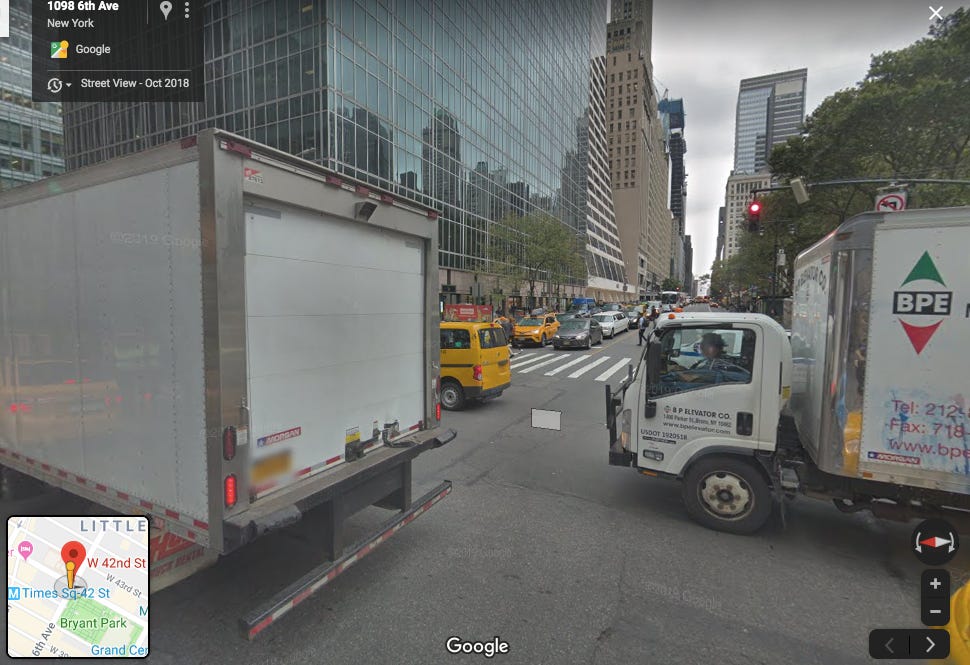
MY WIFE HAD walked past a building earlier in the day, somewhere around Bryant Park, and she had a question about it. It was a memorable piece of architecture, a tall tower whose flat face curved out like a ski jump as it approached the street—but the thing about the memory was, we had also not long ago walked past a building that did the exact same thing, up on 57th Street. Were there really two ski-jump buildings? Had we been seeing these buildings every now and then for years without ever figuring out there were two of them? And why would there be two of them?
If we could figure out what the building was, we could work from there. I called up Google Street View and started maneuvering up and down Sixth Avenue and back and forth on 42nd Street. Up ahead, I caught a glimpse of what had to be the building. I tried to get closer and—I couldn't. There was a truck in my way, and no matter where I went on the screen, I couldn't make the ghostly go-forward arrow appear on the pavement.
Every few years, when I'm in a hurry and too tired to think straight, I fool myself into trying to take a cab through Midtown. I don't want to deal with the subway, I tell myself. And then I'm stuck. The cab slows to a crawl and then slows some more, into full immobility. I stare at the same block through cycle after cycle of the same traffic light, squeezed in by the clotted intentions of uncountable other people and squeezed ever harder by my own knowledge that I have done this to myself.
And here I was living this out again in my own living room, on the screen. In real life, at the worst of it, the answer is to get out and walk. I zoomed out of Street View, got to the regular map again, and then dragged the Street View manikin to the far side of the impassible intersection, to the rough vicinity of the building with the flaring base. Somehow instead of reaching 42nd Street I landed on a pathway inside Bryant Park, but I could see the building at a distance: the front read GRACE.
Now it was time to stop navigating virtual physical space and start moving directly among the information nodes. Wikipedia quickly told me it was the W.R. Grace Building, by the architect Gordon Bunshaft of Skidmore, Owings & Merrill, and that the reason it felt like we'd also seen it on 57th Street was that we had:
"One of the notable aesthetic attributes of the building is the concave vertical slope of its north and south facades, on 42nd and 43rd Street. This is similar to another of Bunshaft's creations, the Solow Building, which is no coincidence, as he had used the initial, rejected façade design for that building in his design for the Grace Building."
The face of Grace Building is mostly white travertine and the face of Solow Building is mostly dark glass. Beyond that: they both are 50 stories, both opened in 1974, and according to a Daily News article that year about the city's growing real estate tax base, they were assessed at $38 million and $39 million, respectively. The article did not mention that they were two versions of the same building. If I read a 1973 New York Times story about a dispute over brokerage commissions correctly, they were interchangeable enough that Monsanto had considered moving its offices into the building on 57th Street, only to reject it in favor of the 42nd Street building.
There were differences in their reception, when they opened. A prize jury in 1974 issued a "special statement" about the Solow building, the Times reported, in which it declared that the new tower "has urban bad manners." The problem, apparently, was its relationship to the rest of the streetscape on 57th Street at the time, which its developer, Sheldon Solow, regarded as a problem that more development would solve: "'In 20 years that whole block will be developed at this scale,' he said, 'and I think my building will set the standard.'”
A sidebar to a New York Times Magazine profile of Bunshaft, published in 1972, described the status of the two towers, calling the future Grace Building by its address:
(Not surprisingly, 1114 Avenue of the Americas, the near‐twin of the 57th Street building at West 42d Street, has stirred fewer negative comments. For while its curves also break the even line of buildings defining the street, 42d Street is no jewel; there the upswept tower looks much better than its neighbors, and all it intrudes on is that thoroughfare's celebrated seediness.)
The profile itself was mainly focused on Bunshaft's commission to design the city's new convention center—a version of the project which would later be abandoned during the '70s fiscal crisis—and with his work on the Hirshhorn Museum and Sculpture Garden in Washington, D.C. Bunshaft was, the article argued, the under-celebrated figure, an awkward child of Jewish immigrants who had won his way into the clubby WASP profession of American architecture and then guided his firm, and with it the city of New York, through the midcentury flourishing of modernist urbanism:
Bunshaft is the chief design partner in the New York office of the architecture firm of Skidmore, Owings & Merrill. For some time now, S.O.M. has been functioning as New York's more or less archetypal architect. A Bunshaft‐designed S.O.M. tower, Lever House, inaugurated the city's postwar building boom, which has now lasted 20 years. During this period of intense construction activity, S.O.M. has designed a greater number of first‐rate buildings than any other architect or firm. And now that the boom—or at least the phase of it that has transformed the skyline with an incredible concentration of single buildings built on single blocks—is quieting, a Bunshaft structure, at 9 West 57th Street, may be making the final statement.
How had the rejected version of the building become the dominant version? Was it really the rejected version? Wikipedia's claim that the Solow Building was a rejected design for the Grace Building is cited to the website Emporis.com, which identifies itself as a "global provider of building information" that "collects data on buildings of high public and economic value, connects them with involved companies and sets standards for this information." Originally, Emporis was called Skyscrapers.com. (According to itself, that was. Was this checkable? Typing in "skyscrapers.com" brought up an address-not-found page from Google, but the cache of the page, from the day before, said "Powered by Emporis.")
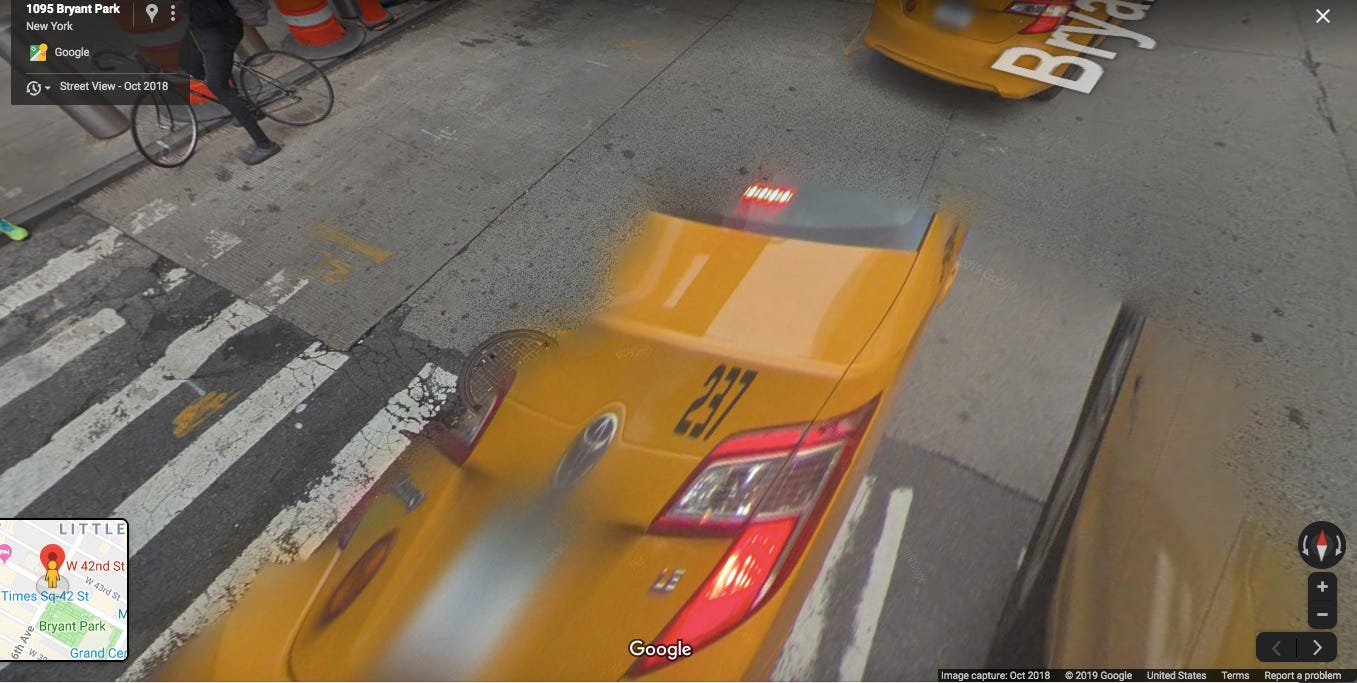
I liked the Grace Building better. But I still didn't understand how to get there on the computer. I tried Google Maps again, cruising up and down 42nd Street, and once more got cut off by the truck. I tried to turn and ended up spinning into a space between two buses, on Sixth Avenue, unable to go up or down. Fragments of wheels and a distorted visual notion of a taxi, broken off by the Google camera's scanning and rendering protocol, floated around me. The crosswalk was warped by physical wheels pulling at its markings and warped again by the photo artifacts. It was unreal and unmistakably like the reality, a persistent image of life inside the built landscape, and no one had designed it at all.
BURNING ANSWERS DEP’T
A followup examination of camp wood prices in the Adirondacks
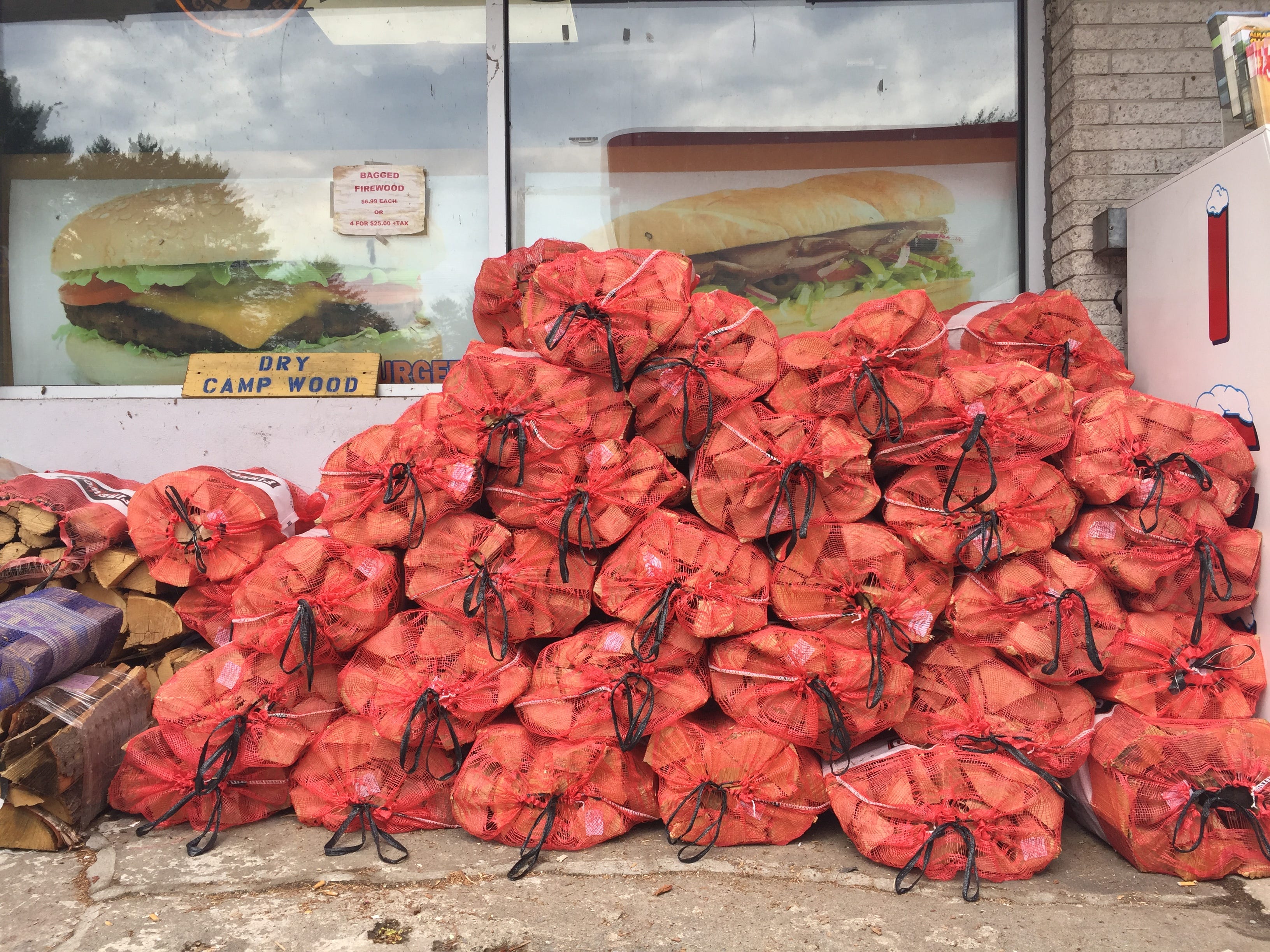
A COUPLE-FEW weeks ago I posted too many pictures of piles of wood for sale on the honor system around camp areas in the Adirondacks of upstate New York, and I promised to return with some answers about amount of wood for money paid, because I got confused by the various sizes of the racks holding the wood, and the prices are all different enough by a dollar or three to create some sort of buyer-decision confusion that usually for me ends in giving up and just paying for whatever’s right in front of me. Anyway!
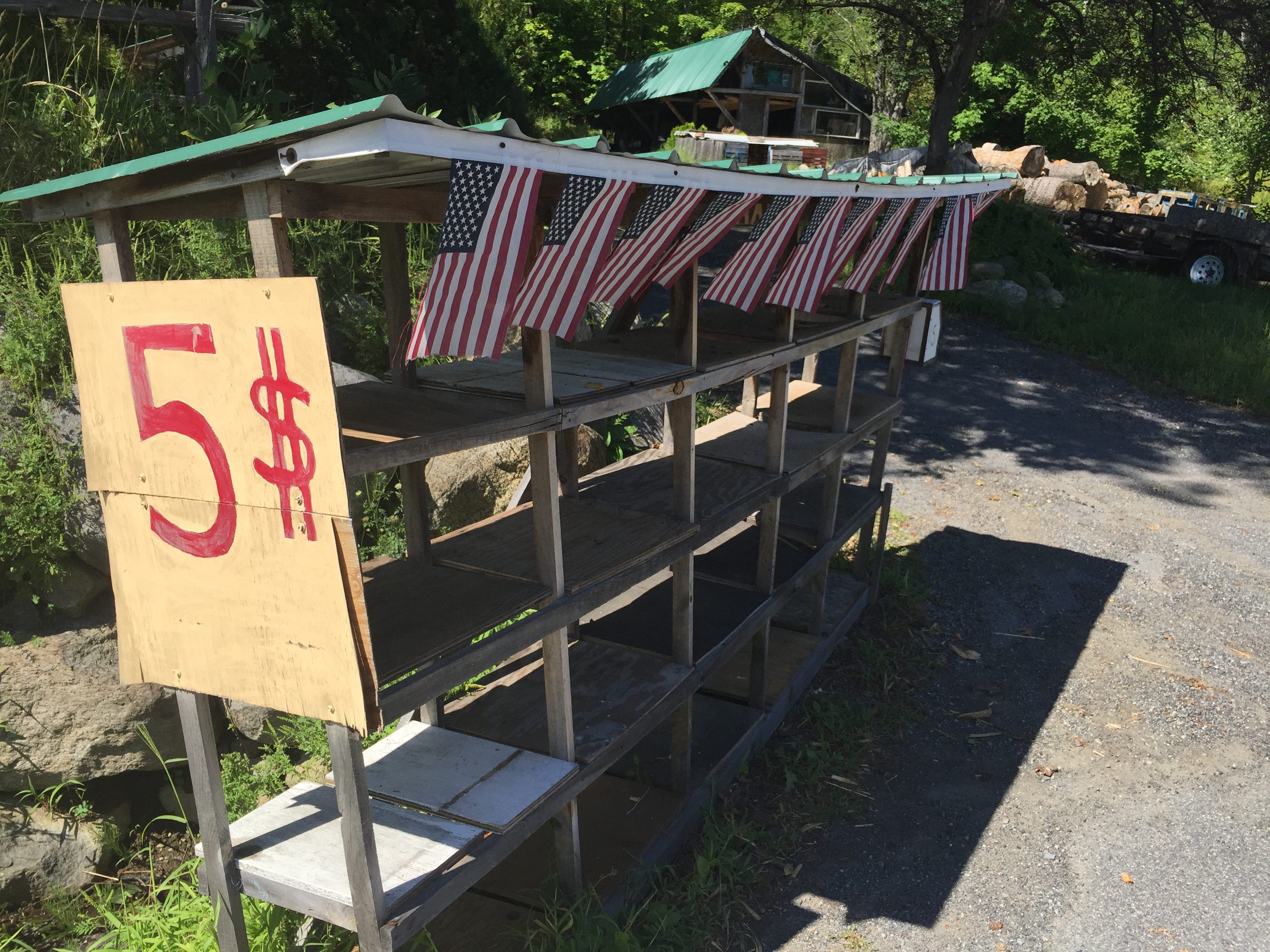
Not available for followup evaluation: The star-spangled wood rack, five dollars for an amount of split wood that would fill a space 22” wide x 13” high x 17” deep.
THE METHOD - All maths fuzzy and approximate:
I figured I’d bring the bathroom scale from my house, along with the kayak, the tent, the coolers, the clothes in my pack, the folding chairs, the cots, the stuff that goes with the kayak, the pop-up awning, some more stuff for the kayak, some towels, pillows, extra sheets and blankets, the bar. THE BAR!

The bar.
I forgot to pack the bathroom scale, so after looking in every store in Schroon Lake Village—because who goes on vacation and wants to look at a scale—I drove to a Walmart in Ticonderoga, New York and while I was there I visited a Star Trek attraction built by an Elvis impersonator, featuring replicas of sets from the original ’60s TV show. Hourly tours!
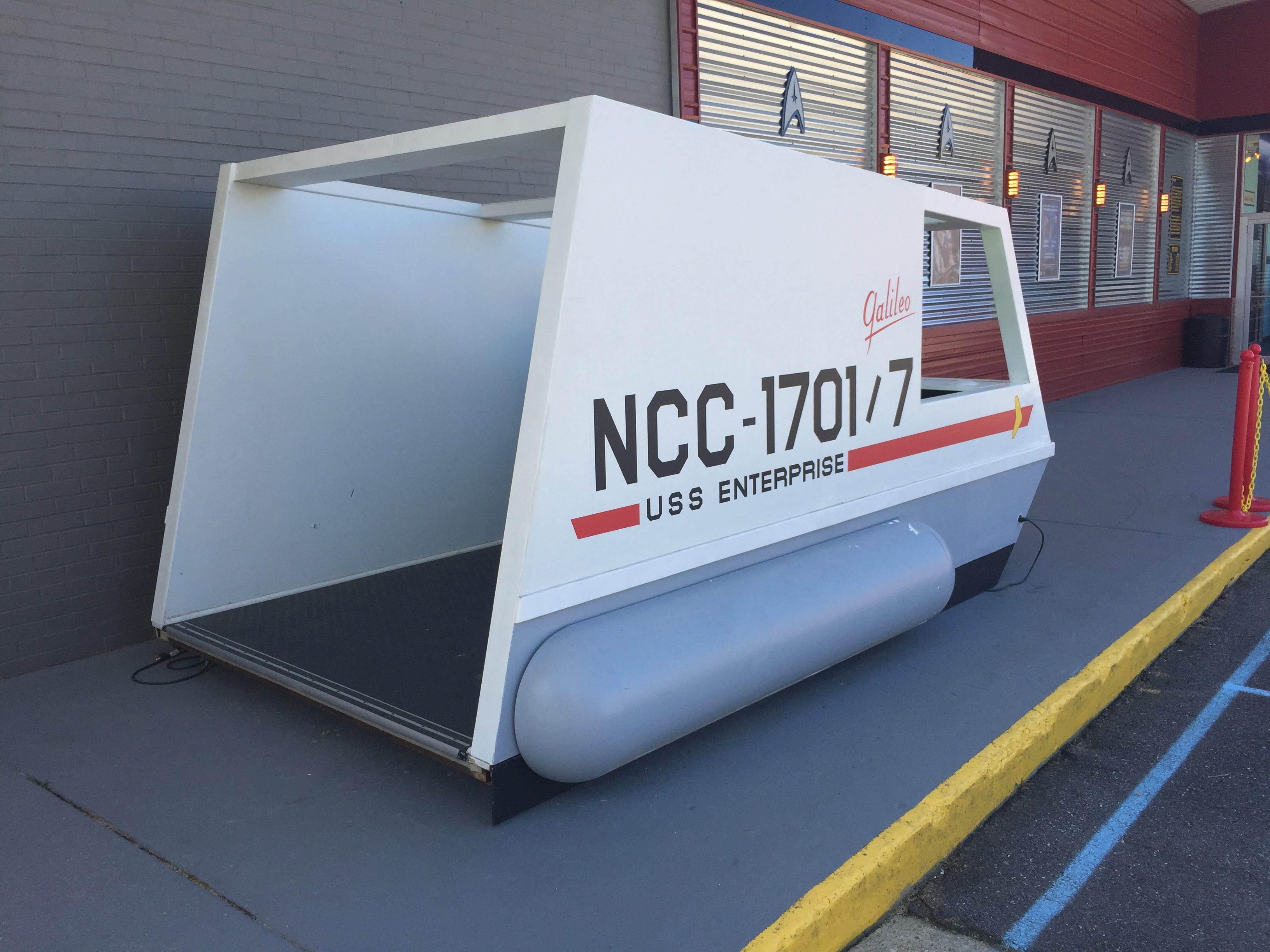
A photo opportunity outside the Star Trek attraction in Ticonderoga, N.Y.
I picked up the cheapest scale on offer at Walmart, the MAINSTAYS™ Dial Scale, a little under eight bucks, which was, I felt, appropriately within the range of prices for piles of campfire wood.

I purchased wood at various stops, measured the racks in which each bunch of wood was displayed, and brought samples back to camp for weighing. Here is an image of the scale in use:
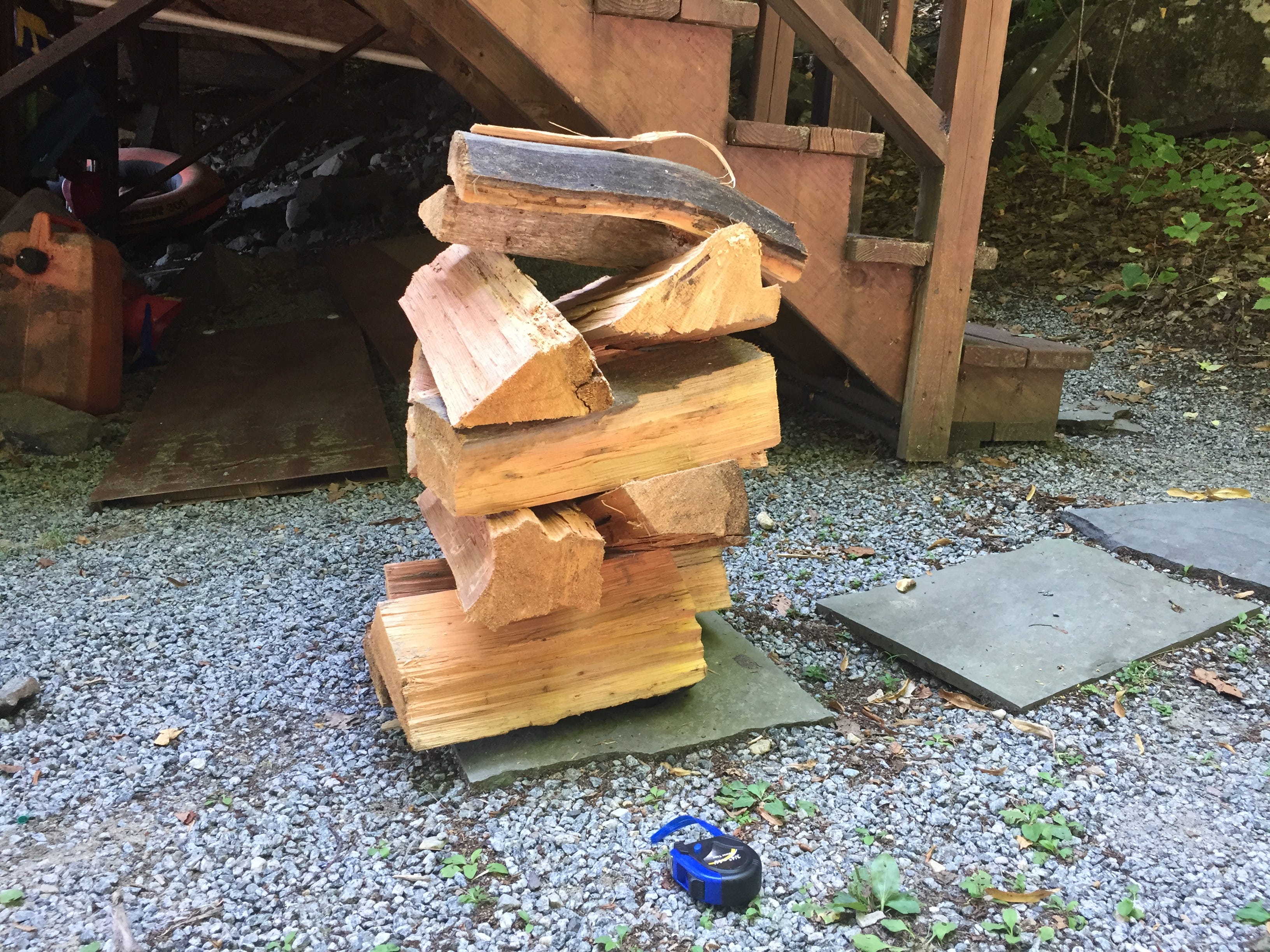
I also bought pre-packaged bunches of wood found in area gas station convenience stores. I figured anything with a label and a logo that would be a ripoff, except that the stuff that’s found in supermarkets and gas stations up here is “kiln dried,” so I don’t know if that makes it better wood or just wood that does not have any insects crawling on it.
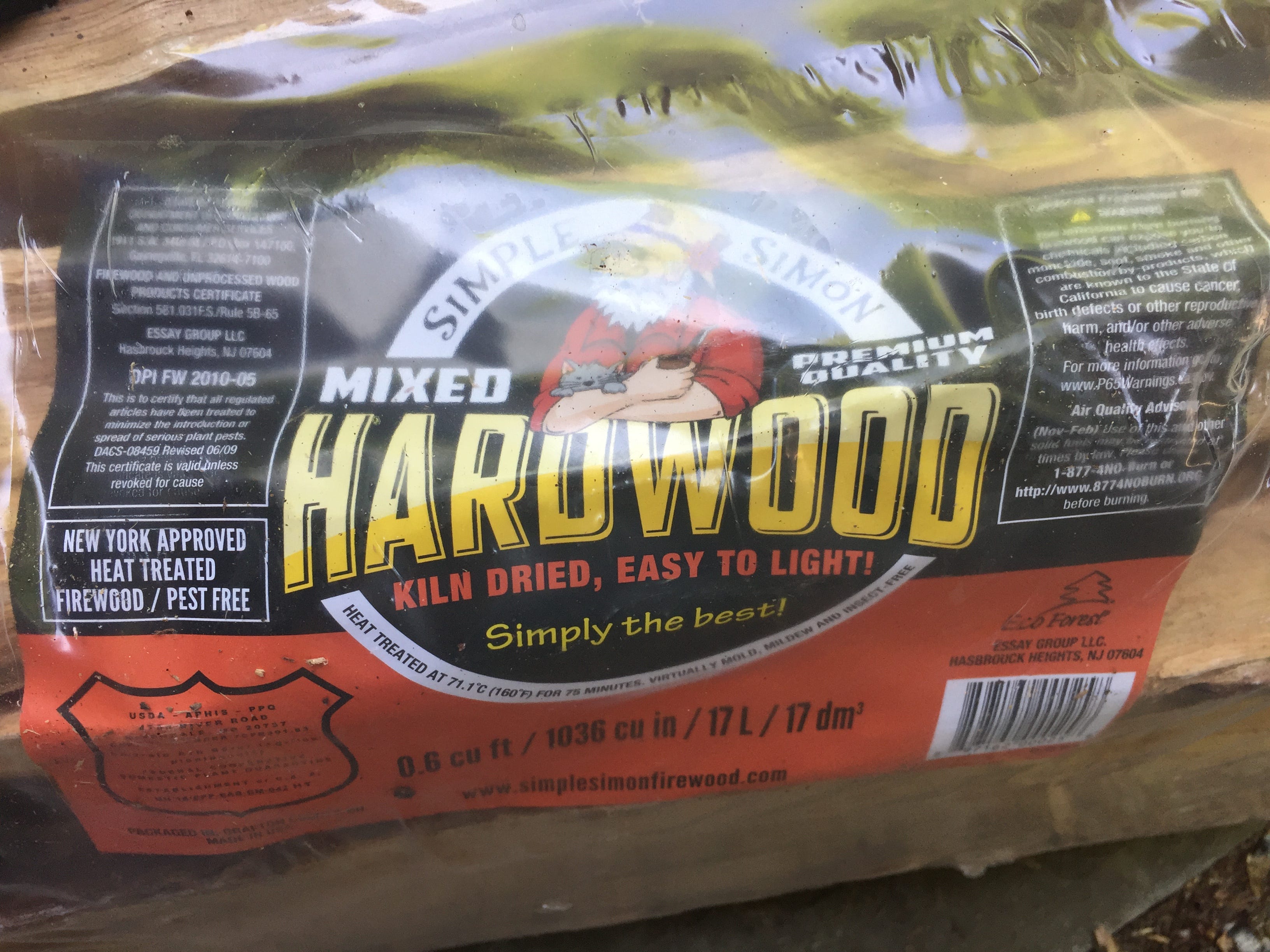
Simple Simon brand wood, 0.6 cu. ft., 22 lbs., $7.01, tax inc., 31 cents/lb.
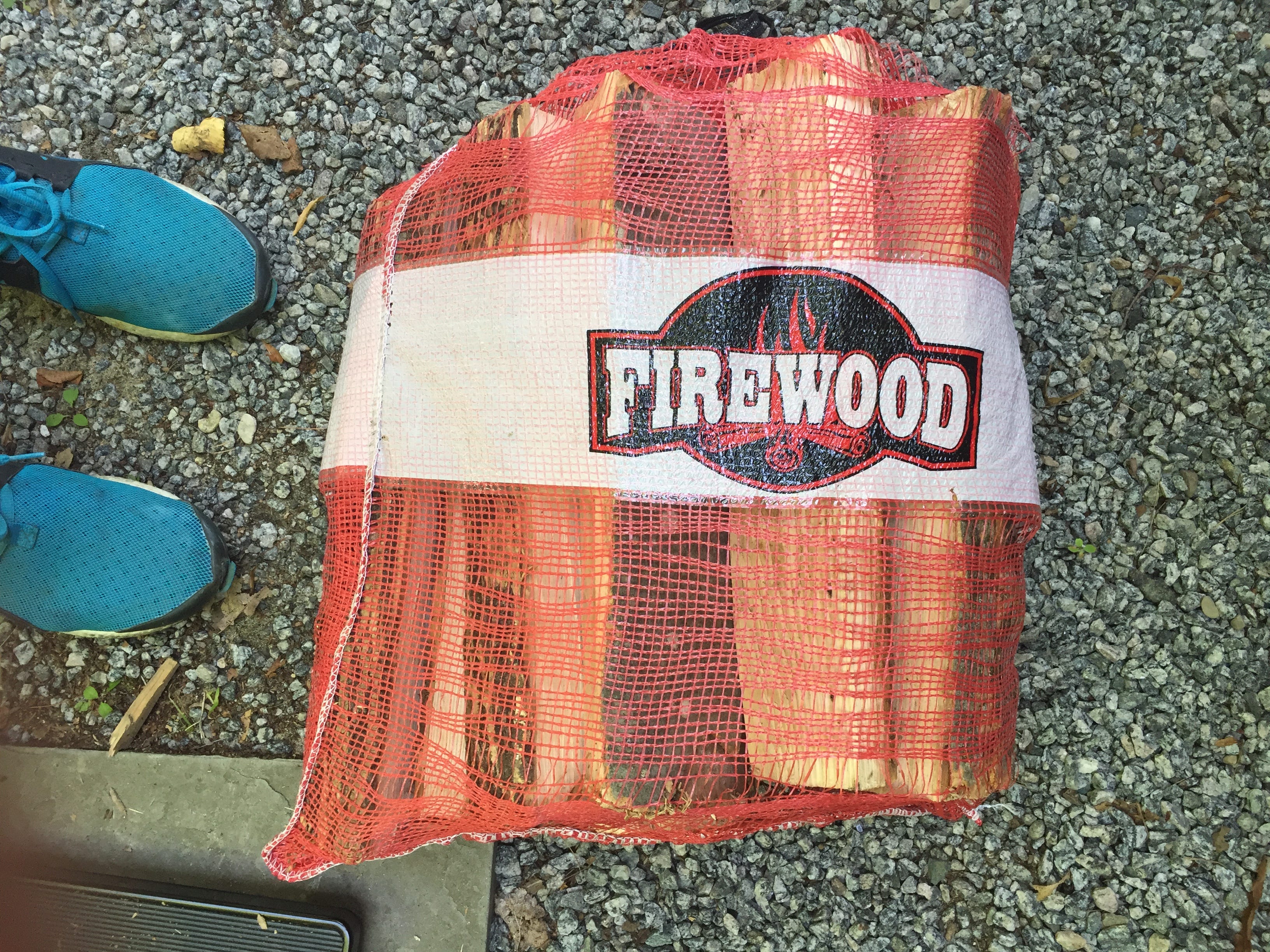

FIREWOOD, 1 cu. ft., 36 lbs., $7.55, tax inc., 48 cents/lb.
I bought a large bag of FIREWOOD brand wood at a gas station, I couldn’t get the FIREWOOD to stay on the scale, so I did the airline luggage trick where you get on the scale and weigh yourself, and then you do some math. The FIREWOOD was 251 lbs. gross weight minus 215 lbs of me, for a net wt. of 36 lbs. I know, I’m working on it.
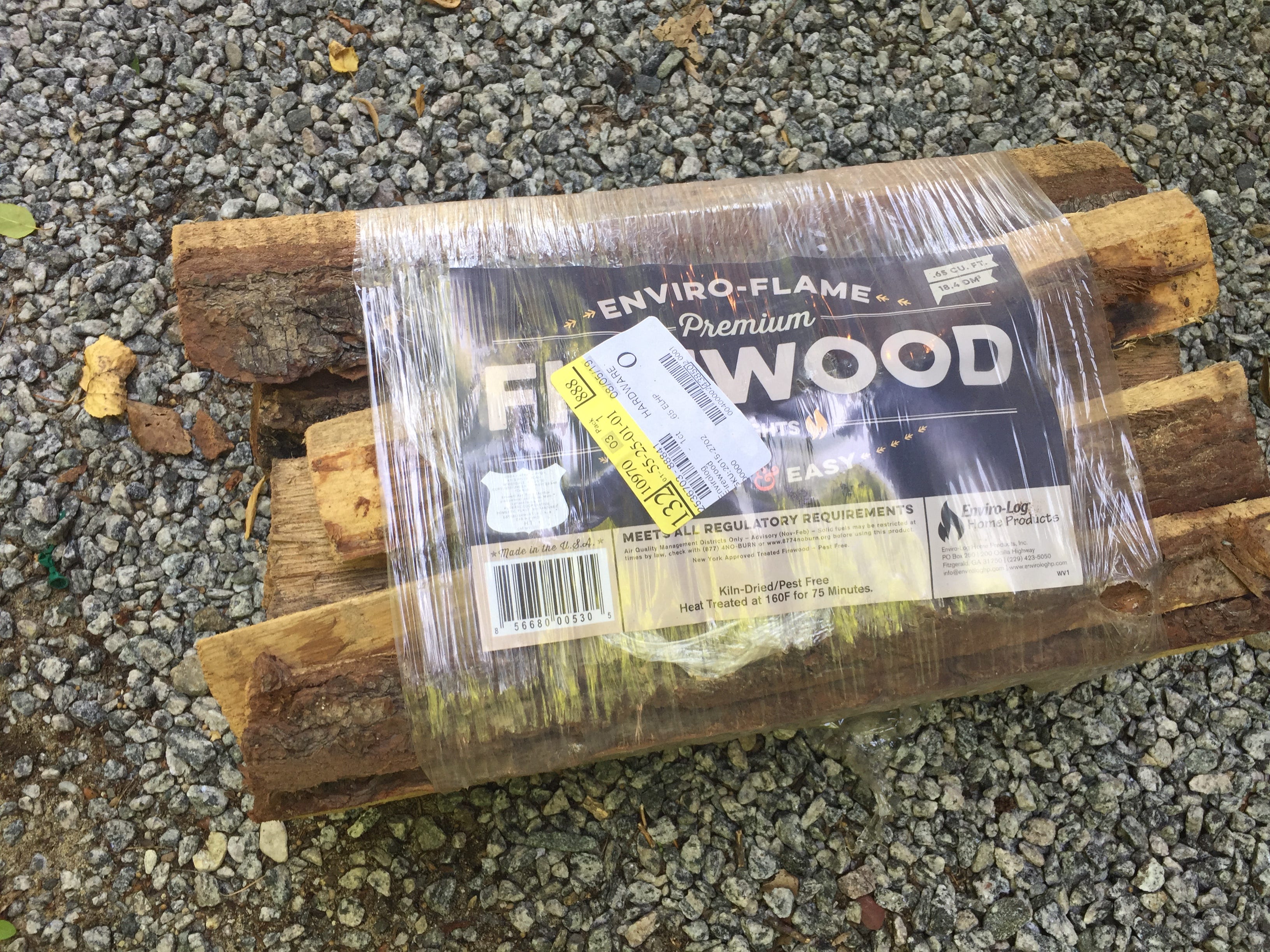
ENVIRO-FLAME Premium FIREWOOD, .65 cu. ft., 18.4 Dm3 (which today I learned means “cubic decimetre”), 17 lbs., $5.40, tax inc., 31 cents/lb.
At the local Dollar General, I bought ENVIRO-FLAME Premium FIREWOOD, which, according to the label, “LIGHTS FAST & EASY,” and “MEETS ALL REGULATORY REQUIREMENTS.” I think the more copywriting on these packages, the less wood for your dollar.
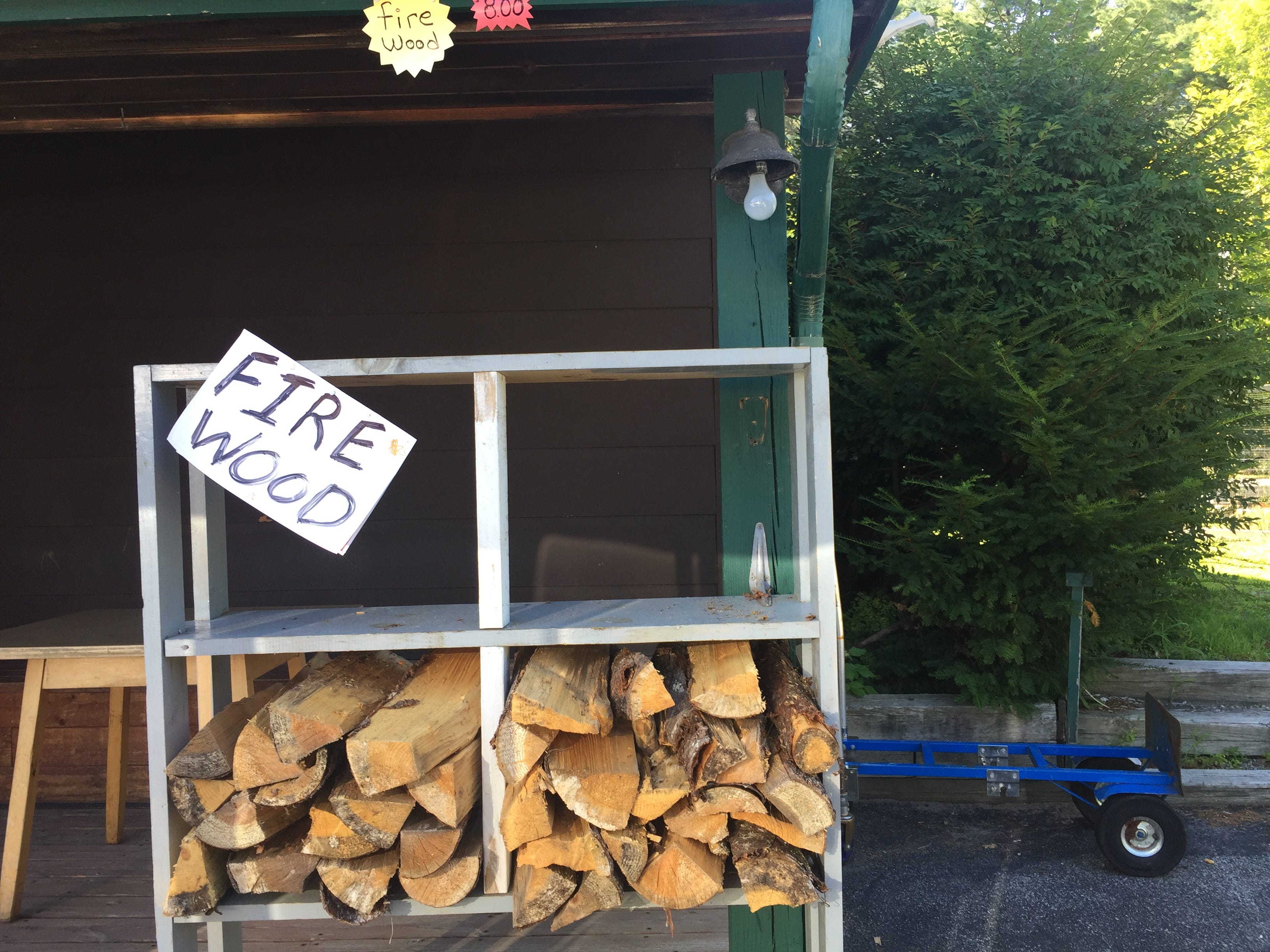
Eight dollar firewood, 20” wide x 16” high x 16” deep. Did not purchase.
I also stopped at a place that had a normal-looking rectangle of wood for $8, which is way more than the other rectangles I was dealing with, so I didn’t even bother buying any to weigh.
A good-looking deal was near the Transfer Station, where you take your camp trash. They weigh it, and you pay 10 cents a pound for them to take it off your hands. One tall kitchen garbage bag’s worth of trash cost me 70 cents to unload. When I pulled out of the transfer station I saw a camp wood rack, and $4 was the lowest price I have seen in my entire time doing this ridiculous project.
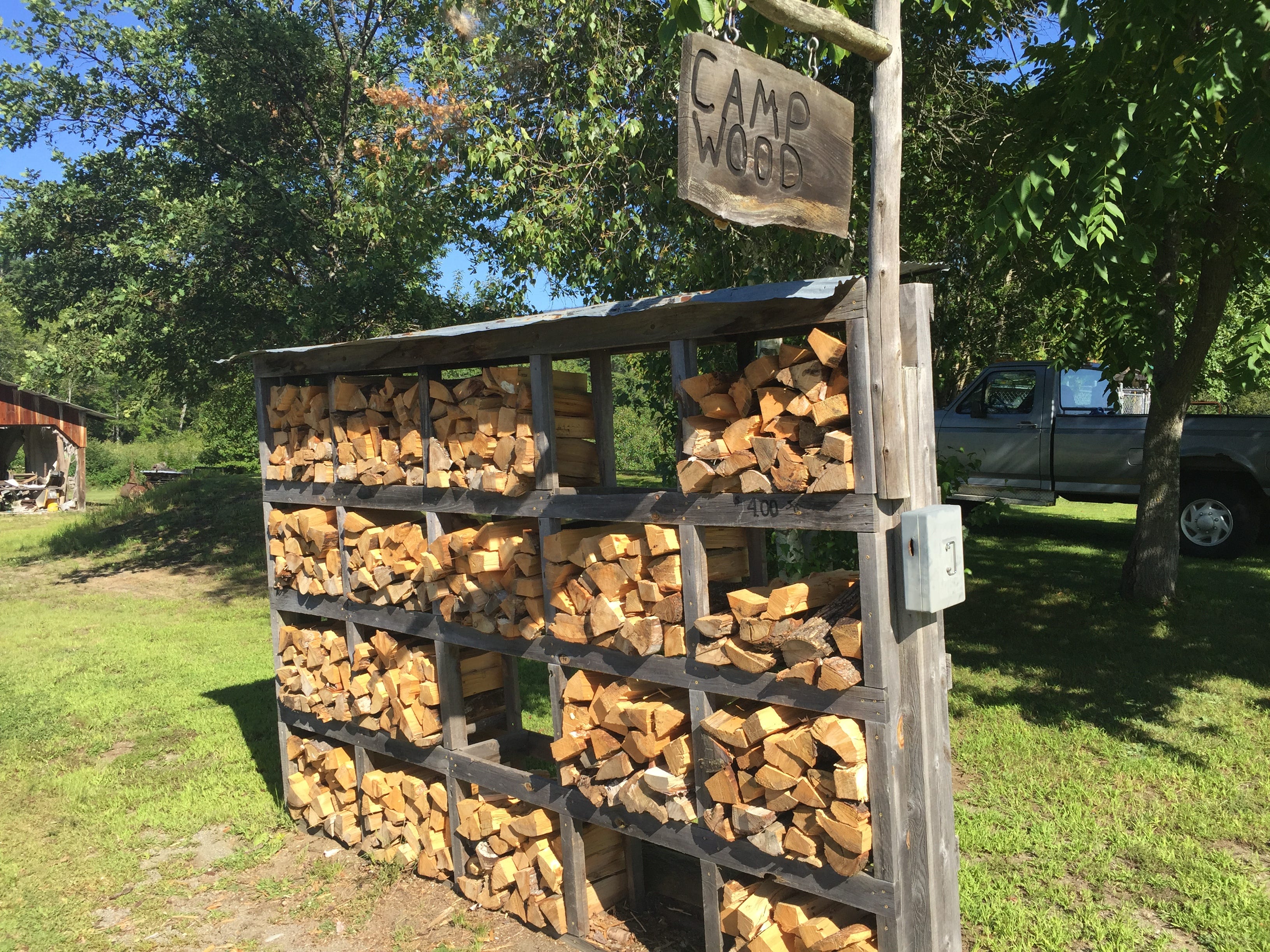
CAMP WOOD near the transfer station, 21” wide x 16” high x 16” deep, 36 lbs., $4.
One thing about the Transfer Station Wood Station, as I am now calling it, is that not all the squares in the rack with wood in them were completely full of wood, so I think you would be on your honor to pay less than four bucks for a less-than portion of wood.
My penultimate spot for wood is the rack I am calling THANK YOU, because somebody wrote that on the pay-box, and that’s nice.
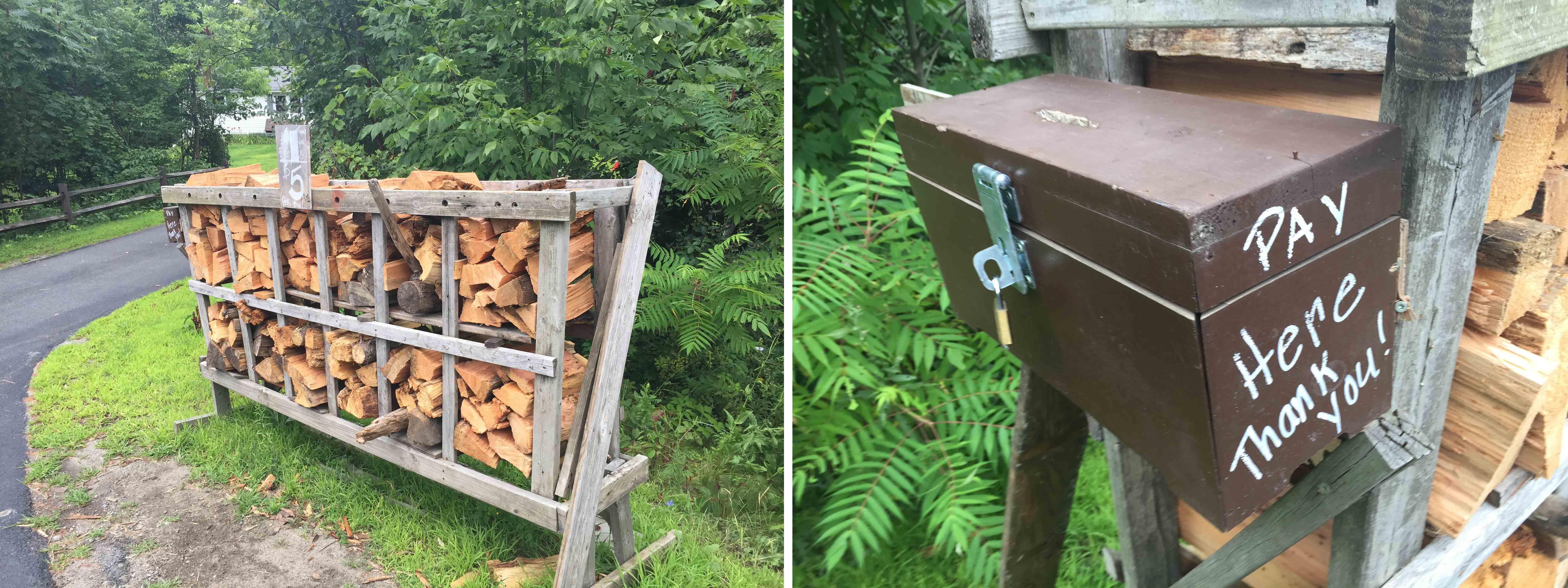
THANK YOU camp wood rack, 12” wide x 18” high x 16” deep., 42 lbs, $5. So that’s 84 cents a pound versus 90 cents a pound for the $4 Transfer Station Wood Station wood.
Careful readers of the last edition of HOW MUCH IS WOOD will be waiting to hear about the deal at the wood sellers Sculptures by Frank, where they sell a lot of wood that is left over from carving bear and eagle statues with a chainsaw. The deal here is $7 a wheelbarrow, and there are frequently three wheelbarrows loaded up and ready to purchase, but this time they were empty and I was on my honor to load my own barrow. I got 138 lbs. of wood on that sucker, for a cost of about 20 cents a pound. I don’t know if because it’s brand-new wood it doesn’t burn as well, but I feel like I got a deal, you know?
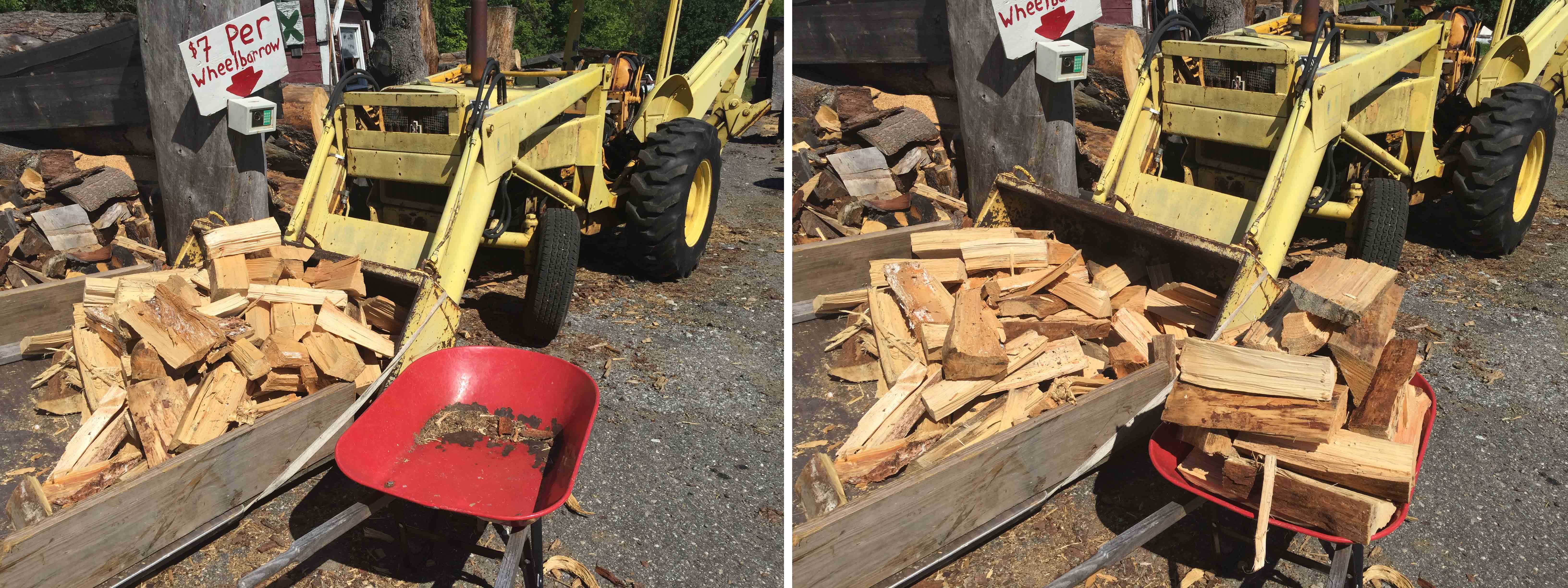
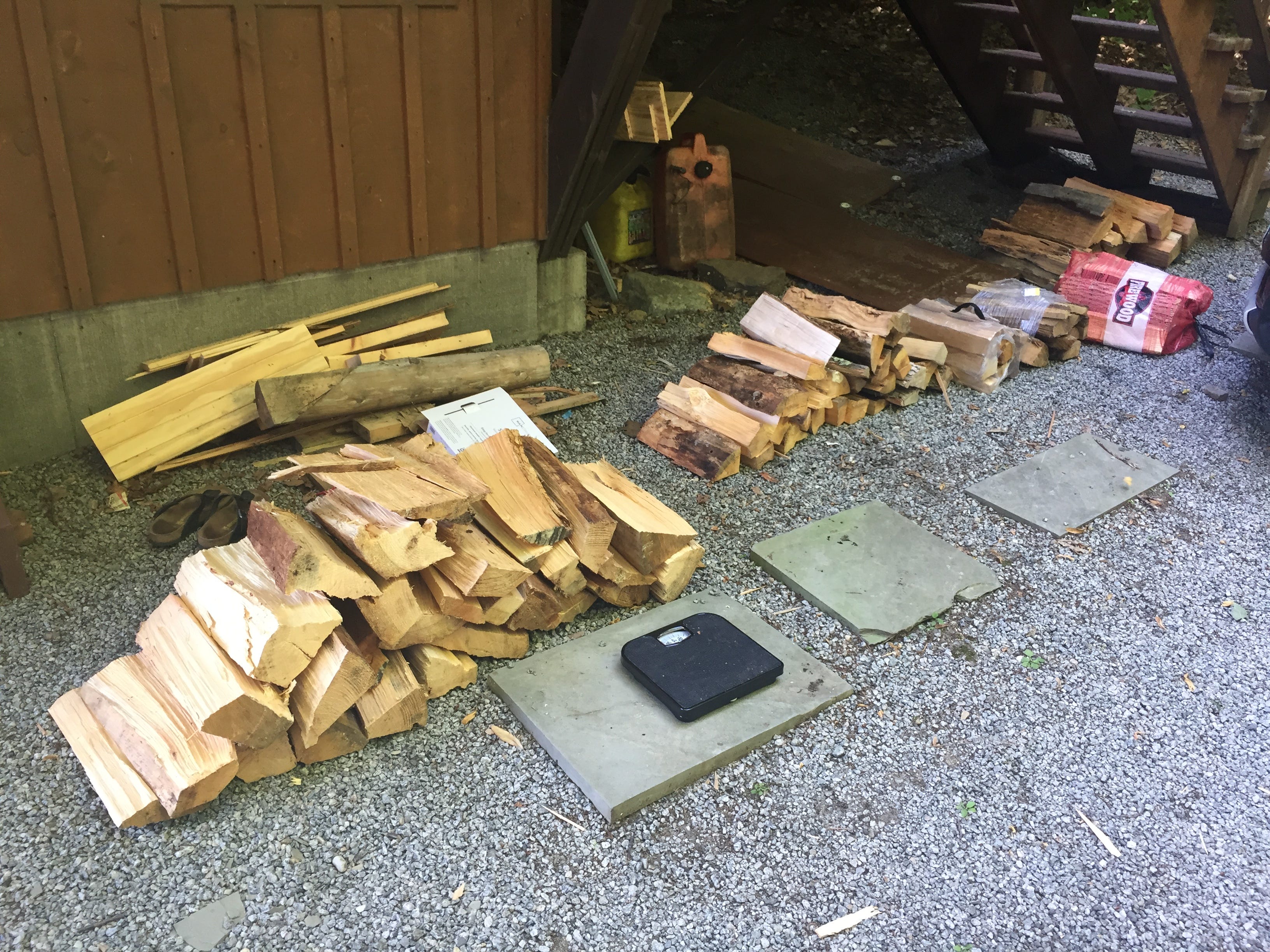
MAINSTAYS™ Dial Scale, foreground, along with respective wood piles evaluated. The winner: Sculptures by Frank (large pile front left), 138 lbs of wood for $7. The stuff in the back left is building supplies, not for camp fire.
RECIPES DEP’T
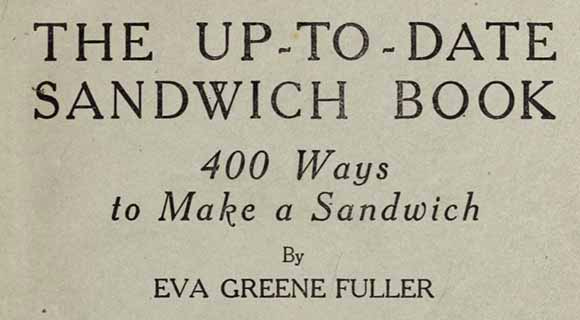
WE PRESENT FOR your continued amusement, delectation, and possible degustation a selection of recipes for anachronistic but entirely actual sandwiches, found in The Up-To-Date Sandwich Book: 400 Ways to Make a Sandwich, published in 1909 and now in the public domain for all to enjoy. So, enjoy, and if you have made any of these sandwiches, kindly send a picture to hmmweekly@substack.com.
ANCHOVY TOAST
One can of boneless anchovies in oil; toast squares of bread without crusts to a nice even brown; two anchovies are placed between two slices of toast and the yolks of hard-boiled eggs are chopped fine and sprinkled over same, the whites being cut into cubes and disposed over the top; dust with white pepper. Garnish with a slice of lemon.
MONTPELIER SANDWICH
Put three hard-boiled eggs and three boned anchovies in a mortar and pound fine; add one ounce of butter, and season with salt and cayenne pepper. Place between thin slices of white bread cut in fancy shapes. Garnish with a sprig of parsley.
BROWN EGG SANDWICH
Mash the yolks of five hard-boiled eggs and moisten with a teaspoonful of melted butter and a drop of vinegar, work to a paste, adding salt, pepper and a little French mustard, and a drop of tabasco. Spread the mixture between slices of lightly buttered Boston brown bread cut wafer thin. Garnish with an olive.
CHEVY CHASE SANDWICH
Put six hard-boiled eggs through a potato ricer. To these add six sweet pickles, chopped fine, a dash of salt and white pepper, and two teaspoonfuls of melted butter; mix and place between thin slices of lightly buttered white bread.
Here Is a Photograph of the Sky

WHILE WE MULL over what to serialize next, here's yet another installment of Spam Filter Letters to the Awl, from the 80,000-word collection of dummy-text cover letters I wrote to make sure that when I emailed that site a photograph of the sky, the filters would allow it to go through.
9/10/14
Subject: It's funny, the priorities of automation
To: Awl notes
are such that these emails, which are a necessary part of producing the reviews, are aggressively filtered and blocked, while the comments on the reviews themselves are a stilted cocktail party of bots talking over one another on their different promotional themes. The problem of comments! Anyway, here's a photo, and the review is in the system.
9/11/14
Subject: This is the daily email.
To: Awl notes
Here is where I start writing a bunch of words for nobody's amusement. These are some more words, laid out to prolong the whole exercise. More words? Yes, of course, more words--one can't be too safe with these things. Or one certainly could, if one kept typing words till the time passed to go make the preschool pickup run. So one must get to the usual point: the review is in the system, and the sky photo is attached.
9/12/14
Subject: The thing and the words
To: Awl notes
necessary for the delivery of the thing, here they are, or here they will be, once I have typed out a few more of them. And more words. And a few more, and a few more, to make up the necessary word-bulk to ensure smooth passage through the tracts of the mail-delivery system. So. Then. Here's a photograph of the sky, and the review is in the system.
9/15/14
Subject: Here is the thing.
To: Awl notes
The thing with the words, you know, that I send to you. The thing that the filters would regard with grave suspicion but for those words. The words! Strings of them. All there, looking very real and meaningful. A little daily ritual to remind us all that nothing means anything, really, unless the systems in which we operate accept it as meaningful. The draft is in the system and the sky photograph is attached.
9/16/14
Subject: Another innovation or change of pace:
To: Awl notes
sending this email in the morning. Will our automated overseers approve? Will they regard it as some new robotic tactic, drawing robotic countertactics? We will learn, I suppose, or we will not learn. We will learn what behavior gets interdicted, but we will not learn why. "Why" will be ever less meaningful as a question, anyway, in our lives. The only answer the machine knows is: because. Here is a sky photo and notification that the draft is filed.
9/17/14
Subject: Here we go.
To: Awl notes
Another day, another dollar. By "dollar" I mean "email padded out with words to pass the filter." Also "photograph of the sky cropped to 640 x 361." That is another thing that "dollar" means.
Also "notification that the draft is in the system."
So many synonyms for "dollar," it's amazing.




